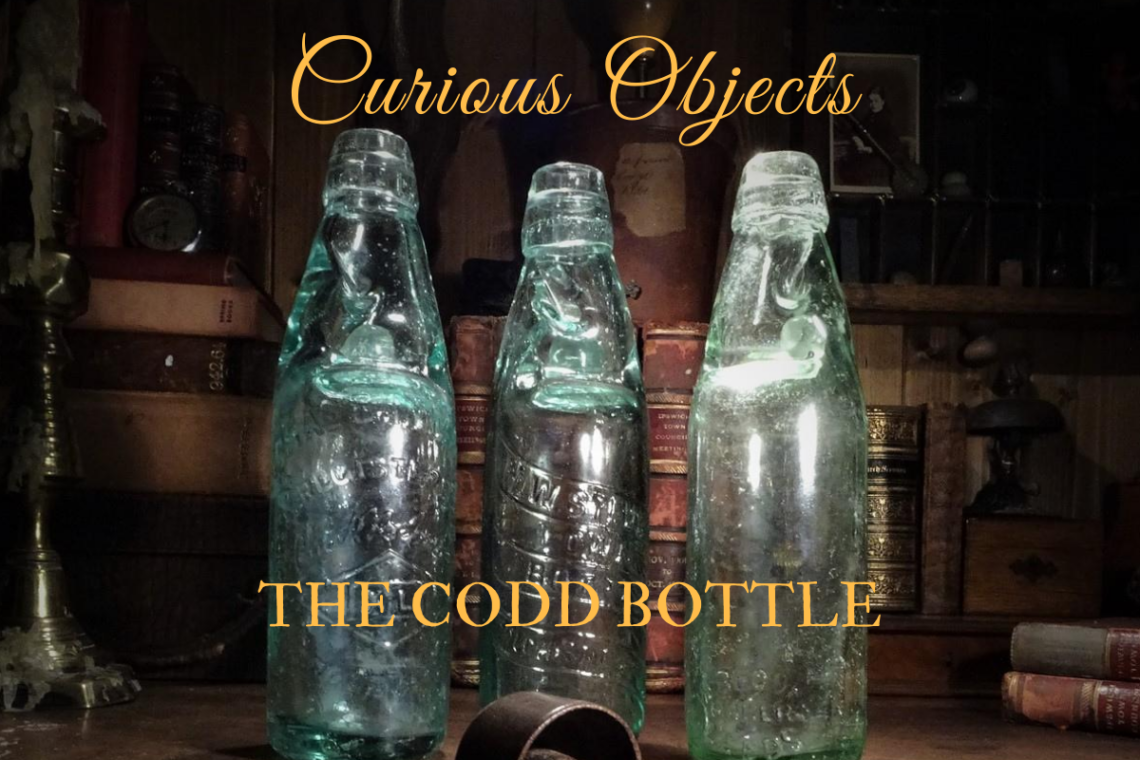
Curious Objects: The Globe Stopper or Codd Bottle
The codd bottle is a rather unusual thing. It’s quite puzzling to try to understand how they work by looking at an old specimen now. It’s that quirky neck and the glass ball sitting at the side. An old curiosity you might say.
So, here’s a little bit about its history, how it works and the man who invented it. (Who, incidentally, was born not far from me in the heart of Suffolk!).
Hiram Codd
The son of a carpenter, Hiram Codd was born in Bury St Edmunds, Suffolk in 1838 (just 15 miles from me!). He moved to London, like many did at that time to find his fortune. Early in his career he became an engineer working for the British and Foreign Cork Company. Hiram must have done well, because at the young age of 23, he was promoted to ‘Traveller for the Business’. By 1870, he had left that company and had set up his own business manufacturing soda water.
Hiram must also have been quite the businessman too, because he managed to persuade two further gentlemen to invest in his company. Although, he had already improved the design of corks for the British and Foreign Cork Company, being an inventor, he was interested in improving the business further. So, to give him more time for inventing, he formed a partnership with another mineral water manufacturer. By 1873, he had perfected his ‘globe stopper’ bottle—the bottles we know today as ‘codd’ bottles named after the man who invented them.
Other mineral water manufacturers who wanted to bottle their products in his ingenious bottles, paid a yearly fee for a licence to manufacture the new bottles. But by 1874, Codd made his bottles free to make and use. However, he made the stipulation that the companies manufacturing the bottles were required to buy the marbles, the sealing rings and the groove tool. These elements were manufactured by Codd in his Hope Glassworks Factory in Barnsley.
The Globe Stopper Bottle
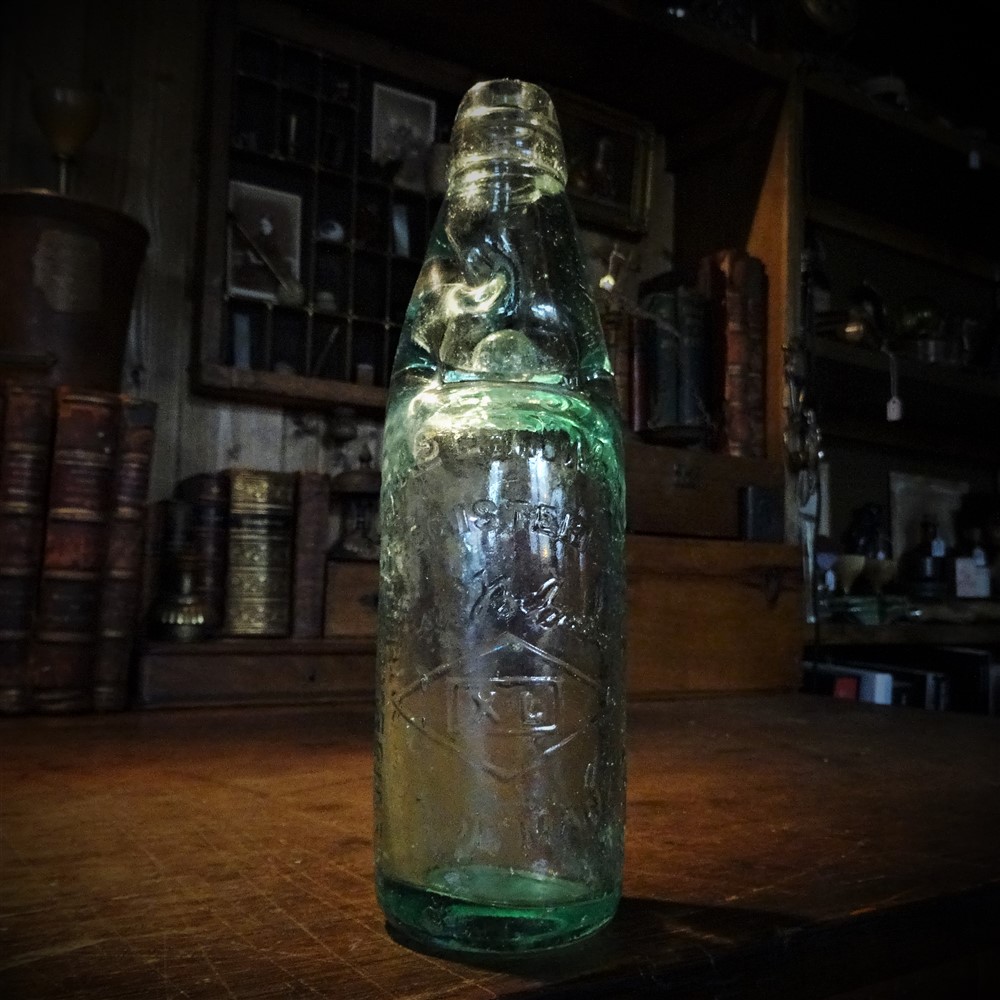
Now, here’s the clever bit – codd-neck bottles were developed specifically for carbonated drinks. They worked by using a marble as a stopper in the neck of the bottle. It was the drink itself which kept the bottle shut. The pressure from the gas from the carbonation kept the marble in place. So that the marble didn’t smash and break the glass, there was a rubber washer/gasket fitted at the top. This made the marble fit softly but securely.
The bottles were filled upside down, then turned upright. The pressure from the gas in the bottle forced the marble against the washer, sealing in the carbonation.
How would the bottle be opened if the marble was kept in place by all that pressure from the gas? To enable the bottle to open and stay open, Codd developed an ingenious trick.
During production, the neck of the bottle was pinched into a special shape. The pinching provided a chamber into which the marble was pushed when the bottle was opened. This chamber prevented the marble from blocking the neck as the drink was poured or drank directly from the bottle.
What is great about these bottles, and very eco friendly in today’s terms, was that there was no lids or tops. These amazing bottles could be filled time and time again. And, because the marble stayed in the bottle, the same marble was used to seal the bottle every time.
Codds Wallop!
A certain amount of force was need to propel the marble into the chamber.
You may have heard of the word codswallop. The word roughly means ‘rubbish’ or ‘nonsense’ as in ‘What a load of old codswallop!’. But there’s another meaning to the word. The coddswallop or codswallop was a gadet to open the bottles. It was placed over the neck of the ‘Codd’ bottle then given a sharp bang (a wallop) to dislodge the marble. Today, they’re just referred to as boring old ‘codd bottle openers’, but I rather like to call them coddswallops!
Although the bottles I’ve pictured here are in one piece, they’re missing the sealing ring/washer and would not work now. Below, you can see the marble in the neck. You can also see the chamber where it would be ‘caught’ while you drank or poured from the bottle.

More Ideas
Hiram was always thinking of better ways to do things. And in 1880, he had the clever idea of a bottle exchange. This was where empty bottles could be returned to their original owners via bottle exchanges. Agents charged a small fee on each bottle for providing this service (one penny per 144 bottles).
This idea went on for years right up until the 1970’s. I’m sure some people can remember taking the ‘Corona’ bottles back to the shop and collecting the reward (perhaps, like me, to spend on sweets!).
The End of the Story
In February 1884, Hiram’s wife of 28 years passed away. It appears that from that point he seemed to lose interest in inventions and ideas. Unfortunately for his family, he also lost interest in his business. He sold his share of the business and did not renew any of his patents. From then on, anyone was free to make his amazing globe bottles.
Hiram must have had a soft spot for his home county as he had named his family home in London ‘Suffolk Lodge’. Sadly, and only two years into his second marriage, that was where he passed away. At the age of 49, he died from: “congestion of the brain and chronic disease of the liver and kidneys” and was buried in London.
Survival of the Codd Bottle
Although codd bottles aren’t terribly rare, a lot of bottles didn’t make it in one piece. This wasn’t because they were particularly fragile. In fact, the bottles are extremely rigid and hardwearing. I’m sure that many people were killed from being hit on the head with one in a bar room brawl! (But don’t quote me on that!) It’s just that, in the late 1800’s/ early 1900’s, the bottles were just too appealing for young boys who smashed them in order to get to the marble inside.
Today, as there become fewer people still with us who actually witnessed the bottles in every day use, they have become an unusual item. I have found myself having to explain the ingenuity of my codd bottle many times. Unfortunately, my own prized example (H W Stevens, from Colchester and Ipswich) found itself in a nasty situation with an elbow and a hard floor. It’s now not quite the beautiful example it was when I acquired it. Amazingly, even though it’s heavily cracked and sharp, it is still in one piece!
Codd bottles are now popular for collectors all over the world and they’re still being manufactured today in Japan and India.
They are mostly sought after by collectors, but they do make great a display piece. I do have a ‘ready collection of four’ in the Curiosity Shop which includes a rare, smaller bottle. I also have a codd bottle opener – or as I like to call it a coddswallop.
You can read more about the Codswallop here in a separate blog.
- Picture of Hiram Codd from: https://www.findagrave.com/memorial/24680991/hiram-codd
Thanks for reading.
Kim x


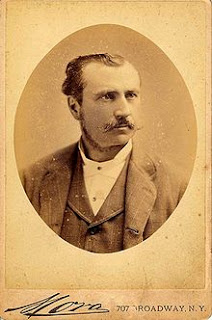
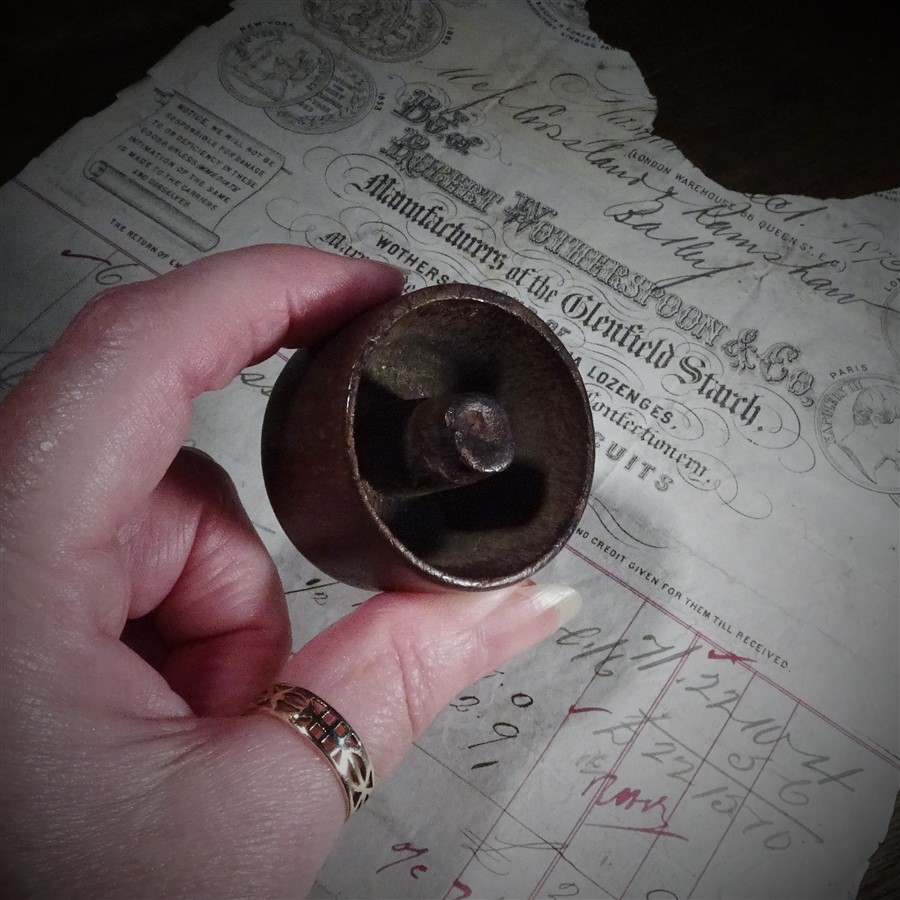
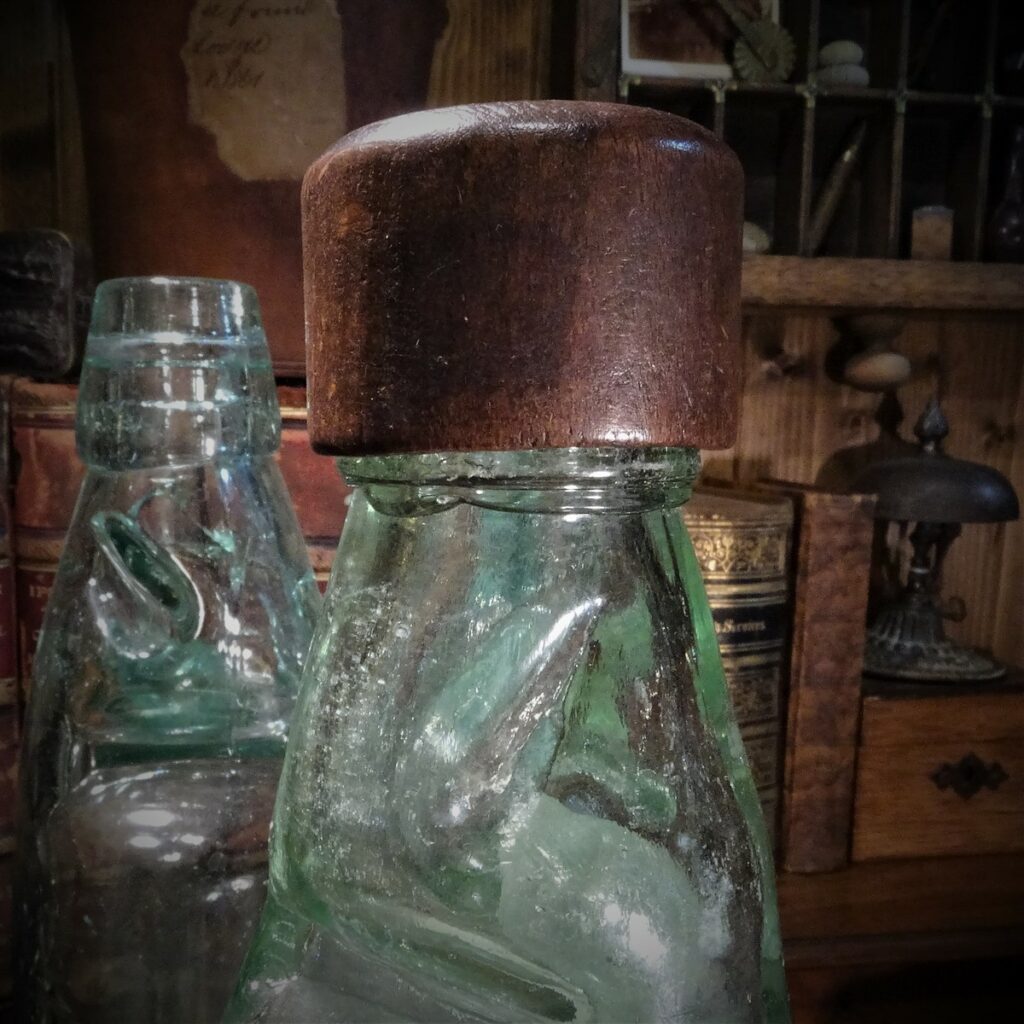
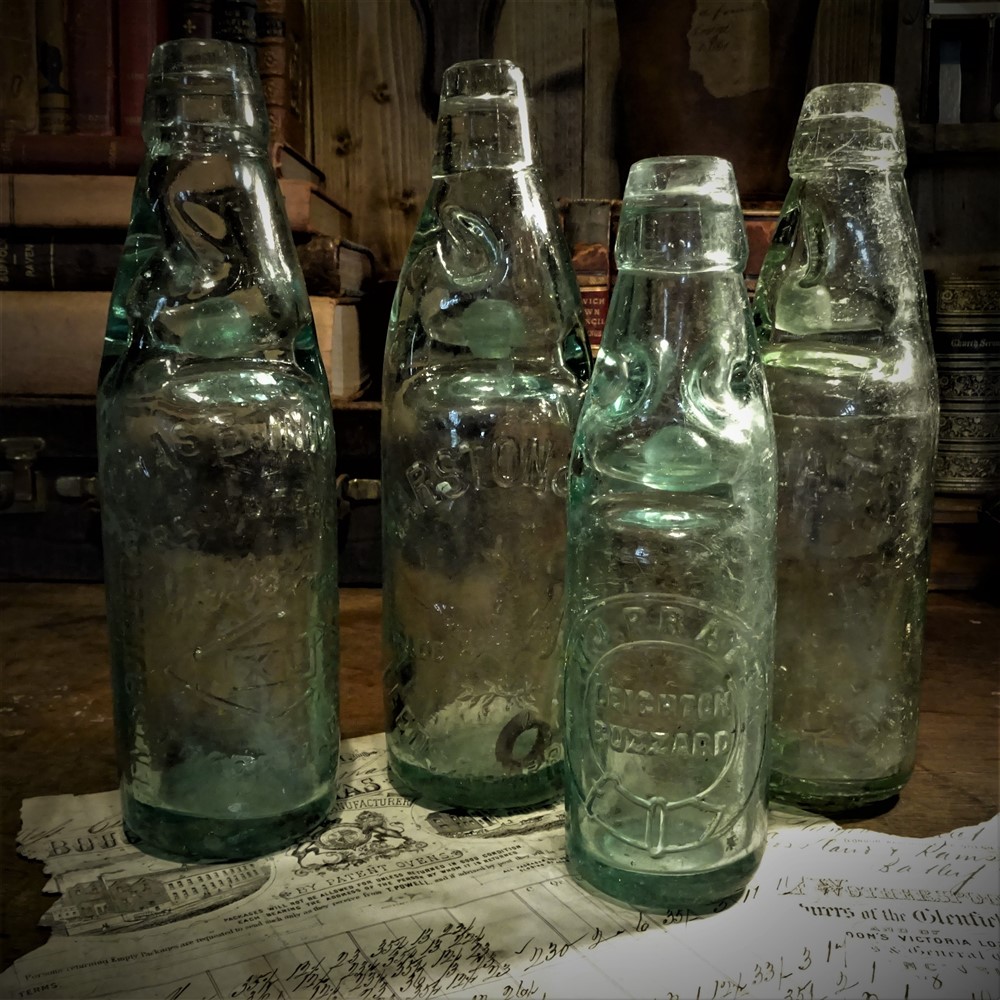


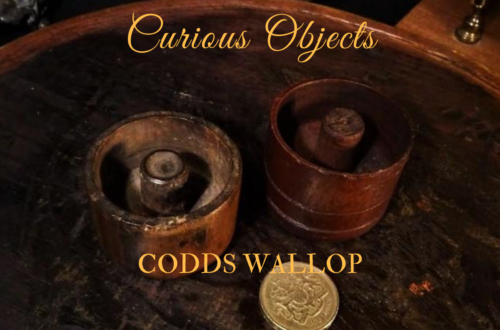
9 Comments
Paul Price
I got a bug for collecting bottles last year having found some on a beach local to me and near a ship wreck. I’ve now aquired my first 2 codd bottles and love their design. Thank you for your blog as I’m learning more about these very special items. I love the qur bubbles and the weight to the glass. Now are they best kept not cleaning them or cleaned? I mean say one day I decide to sell my collection or pass it down and my son decides to , what would a collector look for? Cleaned, too heavily cleaned , or nothing more than a rinse?
Kim
Yes, they’re a great design. I think cleaning is a matter of personal preference. Although, like most other pieces in the antiques business, it’s usually best not to clean too much. I have a few bottles of my own and have chosen just to rinse them. I rather like the old residues which give character and tell the story of where the bottle has been.
Good luck with your collection!
Paul Price
Thanks Kim for taking the time to reply. Best wishes.
Kay
Hello I have 4 codd bottles in very good condition would anyone know anywhere I could take them to sell on?
Jordan Brodland
Thank you for sharing this very interesting background! I have always been fascinated with the Japanese soda sold in these style bottles and had no idea the history.
Kim
Thanks for taking the time to let me know you found my blog helpful. That’s great!
Pingback:
David Petts
Hello i started collecting old bottles many moons ago, I am now 79. I had serious illness i 2020 that nearly killed me twice. I got over it eventually but obviously not unscaved and now (rightly so) not allowed to drive.
I now visit a local community cenre every day and have met some lovely retired proffesional people. One lady is a retired archiolgist and we have become quite good friends as we both have interest in old things.
Hence what what we call codswallop bottles, maybe a dialect term. I have 4 2 small and 2 large, 3 are cloudy one small one is totally clear but cracked.
Hence my interest in cleaning 3 of my bottles. Kind regards David Petts
Steven Buehler
The bottle style is still used for Japanese Ramuné drinks with both glass and plastic codd-neck bottles.